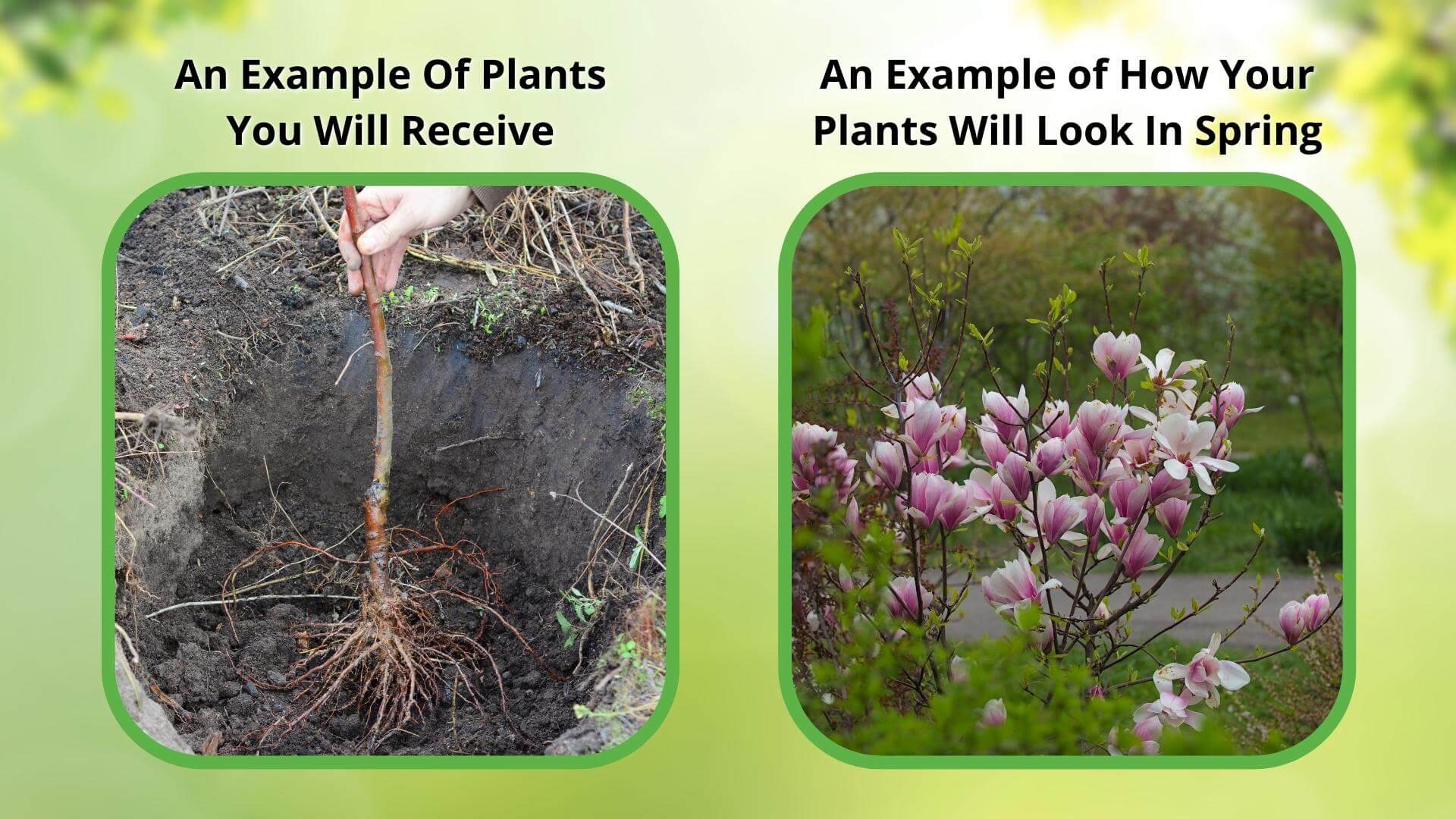Couldn't load pickup availability
🌸When you add 1 plant to cart, it automatically adds the free one
Apple Trees For Sale
Apple Trees are rewarding fruit trees to grow, and you can taste the results of your efforts. They are an excellent option for your home orchard. Most homeowners love them because they cannot only control what their family eats but also save a fortune growing fruit trees at home. Believe it or not, they are not hard to grow, and the rewards are amazing.
Try a fruit tree from TN Nursery. We offer a buy-one-get-one-free deal and tons of incredible savings storewide.
Apple Trees Plant Details
Family: Rosaceae
Light Requirement:Full Sun
Water Needs: Moist
Height: 8 – 30 ft.
Spread: 6 – 25 ft.
Growth Rate: Fast
Bloom Time: Spring
Flower Color: White
Wildlife Value: Attractsbees
Landscape Uses and Maintenance of Apple Fruit Trees
Apple Trees are deciduous fruit trees that are a great investment for your property. These trees are simply a must-have for any gardener trying to live more sustainably! Apple Trees get small white, pink, or red flowers that bloom in the spring.
Plant your new tree in full sun. In addition to ensuring that the tree gets enough light, a full sun location will help ensure that your trees dry out after morning dew, decreasing the chance of fungal issues.
Fertilize in early spring with a balanced formula. Do not fertilize after the midpoint of summer. Add a layer of compost, humus, or leaf mold around the base of the tree, staying away from the trunk. Do not create a volcano around your tree! Watch your trees for signs of disease or pests and treat quickly. Choosing varieties that are resistant to the issues is always a good idea to maintain orchard health. Flowers will attract pollinators like bees.
Noteworthy Characteristics of Apple Fruit Trees
Apple Trees 3-4' vary in crispness of bite, color, smell, and texture. Some are better for baking into an apple pie or processing into apple butter, while others are best for eating right off the tree.
This Is How Your Plants Will Look upon Delivery

Bloom Season
Summer
Height at Maturity
Under 25 Feet
Care
Apple trees thrive with frequent watering, particularly during dry spells, and help from fertilizer in early spring. Prune annually to encourage airflow and remove dead branches. Mulch the base to maintain moisture and stop weeds.
Plant Reproduction
Apple fruit trees spread through seed dispersal and grafting.
How to Grow and Care for Fruit Trees
Fruit trees are a rewarding addition to any landscape, offering fragrant blossoms in spring and fresh, homegrown harvests in summer or fall. Popular varieties like apple, peach, pear, and plum thrive in full sun and well-drained, nutrient-rich soil. Choose trees suited to your USDA zone, and plant in early spring or fall for the best root development.
Dig a hole twice as wide as the root ball and deep enough so the root flare sits just above the soil line. Backfill with native soil, water deeply, and apply mulch around the base—keeping it a few inches from the trunk—to retain moisture and suppress weeds. Water regularly during the first growing season, especially during dry spells.
Prune annually to shape the tree, improve air circulation, and boost fruit production. Fertilize in early spring with a balanced or fruit-specific fertilizer. With proper planting, seasonal care, and a little patience, fruit trees will reward you with beauty, shade, and bountiful harvests year after year.
Shipping date depends on the date displayed and chosen when you order from the product's page.
We only accept returns on plants verified dead. If you think your plants have died, we offer a 1 year warranty, please use use this File a Claim Link to verify dead plants and start with return warranty process.



Caring Tips
How do I care for my Apple Fruit Trees?
Each box contains detailed care instructions and information about your product. But here's the basics.
Care Tips
Apple trees thrive with frequent watering, particularly during dry spells, and help from fertilizer in early spring. Prune annually to encourage airflow and remove dead branches. Mulch the base to maintain moisture and stop weeds.
Light Requirements
Apple fruit trees thrive in full sun, requiring at least 6-8 hours of direct sunlight daily. This exposure is crucial for healthy growth, abundant flowering, and optimal fruit production. Ensure they are planted in an open area.
Hardy Planting Zones
4 • 5 • 6 • 7 • 8 • 9
My Apple Fruit Trees from TN Nursery arrived in excellent condition with strong roots and fresh branches. They were easy to plant and are thriving in my garden. These trees are a wonderful investment for anyone who loves fresh fruit. TN Nursery always provides reliable quality.
The Apple Fruit Trees I received from TN Nursery were healthy, vibrant, and well-packaged. They have already taken root in my yard and are showing excellent growth. I’m impressed with the quality of the trees and the customer service from TN Nursery.
I ordered Apple Fruit Trees from TN Nursery, and they arrived better than expected. The trees had strong, moist roots and transplanted easily. They are growing fast and look incredibly healthy. I’m very satisfied with my purchase and look forward to enjoying homegrown apples.
My Apple Fruit Trees from TN Nursery arrived in fantastic shape. They were carefully packaged, fresh, and easy to transplant. Within weeks, I noticed strong new growth, and the trees are thriving. I highly recommend TN Nursery for anyone looking to add apple trees to their orchard.
I couldn’t be happier with the Apple Fruit Trees I purchased from TN Nursery. The trees were well-rooted, healthy, and ready to plant. They are already flourishing in my garden, and I know they will provide years of fruit and shade. TN Nursery is the best place to order fruit trees online.




